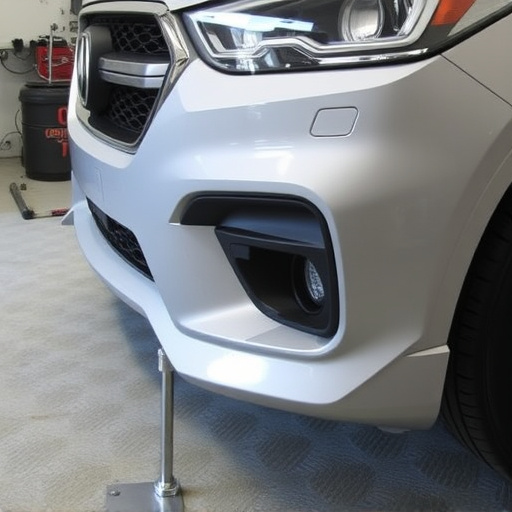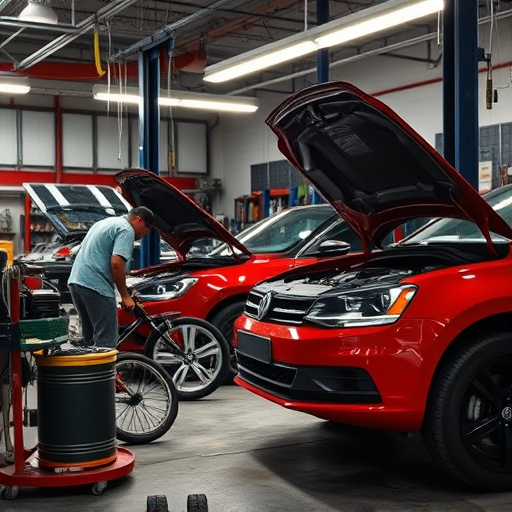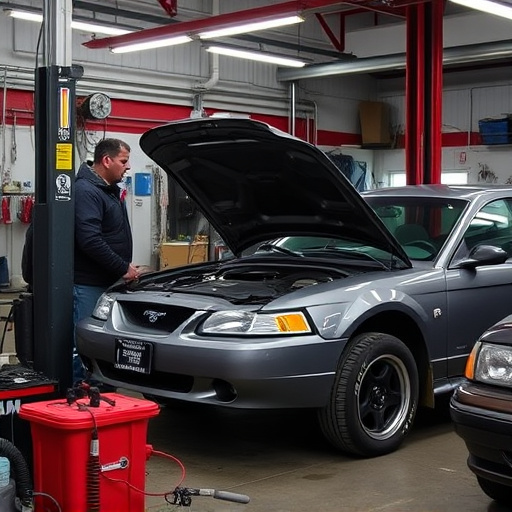Auto body repair reviews are crucial for building customer trust and informing decision-making. Customers prefer authentic descriptions that highlight specific repairs, like "computerized measurements" or "meticulous panel gaps," demonstrating expertise. Real language in reviews provides transparent insights into a shop's capabilities, from simple to complex projects. Distinguishing genuine feedback from generic reviews is key; honest testimonials from satisfied (and dissatisfied) customers offer valuable insights for informed choices. Encouraging these reviews through open communication, incentives, and dedicated channels enhances shop reputation and improves services.
In today’s digital age, auto body repair reviews are a crucial guide for consumers. The language used in these reviews significantly impacts customer trust and decision-making. This article delves into the distinction between real, authentic feedback and generic, synthesized reviews. We explore how genuine language reflects service quality and offers valuable insights. Additionally, we provide best practices to encourage honest, specific feedback from customers, ensuring transparency and reliability in auto body repair reviews.
- Understanding the Impact of Language on Customer Trust in Auto Body Repair
- The Difference Between Real and Generic Reviews: A Closer Look at Authenticity
- Best Practices for Encouraging Honest, Specific Feedback from Customers
Understanding the Impact of Language on Customer Trust in Auto Body Repair

The language used in auto body repair reviews significantly shapes customer trust and decision-making processes. When customers read about their experiences, they seek authenticity and clarity. Using generic terms like “good job” or “fixed quickly” might sound positive, but they lack the depth to convey actual quality. On the other hand, real, descriptive language paints a more accurate picture. For instance, mentioning specific techniques used in frame straightening, such as “computerized measurements for precise alignment” or describing intricate paint restoration processes, builds trust by demonstrating expertise and attention to detail.
In the realm of auto body repair reviews, customers want to know the facts—the good, the bad, and the exceptional. Real language allows them to assess a collision repair shop’s capabilities accurately. For example, instead of a vague “perfect finish,” detailed descriptions like “expertly touched up, matching factory paint” or “meticulous panel gaps and alignment” give potential clients confidence in the shop’s skills. This level of transparency fosters trust, encouraging customers to choose shops that openly communicate their capabilities, whether it’s for simple repairs or complex auto body restoration projects.
The Difference Between Real and Generic Reviews: A Closer Look at Authenticity

When it comes to auto body repair reviews, the distinction between real and generic feedback is paramount for consumers seeking reliable services. Real reviews stem from genuine customers who have experienced the repairs firsthand, offering insights into the quality of work, professionalism of staff, and overall satisfaction. These testimonials are invaluable as they provide an authentic perspective on what to expect when bringing your vehicle to an auto body shop. On the other hand, generic reviews can be inflated or manipulated, often lacking specific details about the repair process or outcomes. They may come from non-customers or individuals with ulterior motives, making their credibility questionable.
For consumers, discerning real reviews from generic ones is crucial for making informed decisions. Real auto body repair reviews highlight not just the successful restorations but also any challenges faced during the process. This transparency allows customers to gauge the shop’s ability to handle complex repairs and deliver consistent results. By relying on authentic feedback, individuals can choose reputable auto body shops, ensuring their vehicles receive the best care possible, whether it’s a simple dent repair or more intricate car body repair work.
Best Practices for Encouraging Honest, Specific Feedback from Customers

Encouraging honest and specific feedback from customers is a best practice for any business, especially those in the auto body repair industry. One effective strategy is to create an environment where customers feel comfortable sharing their experiences. This can be achieved by fostering open communication, both during and after the repair process. Auto body repair professionals should actively seek customer input, asking for details about the service provided, the quality of work, and any areas of improvement. Providing a dedicated feedback channel, whether through online forms or in-person discussions, ensures customers have a platform to express their satisfaction or concerns.
Additionally, offering incentives for detailed reviews can motivate customers to share their thoughts honestly. This could include discounts on future services, gift cards, or even small tokens of appreciation. By implementing these best practices, auto body repair businesses can gather valuable insights into customer experiences, enhance their services, and maintain a strong reputation in the market, ultimately driving more positive auto body repair reviews.
In the competitive landscape of auto body repair services, genuine customer feedback is paramount. By fostering an environment that encourages honest, specific reviews, businesses can build trust and enhance their reputation. Distinguishing between real and generic language in these reviews allows for a deeper understanding of customer experiences, ensuring only authentic insights shape service improvements. Adopting best practices to elicit detailed feedback ensures auto body repair shops not only attract new clients but also retain existing ones through transparent and high-quality service delivery.














